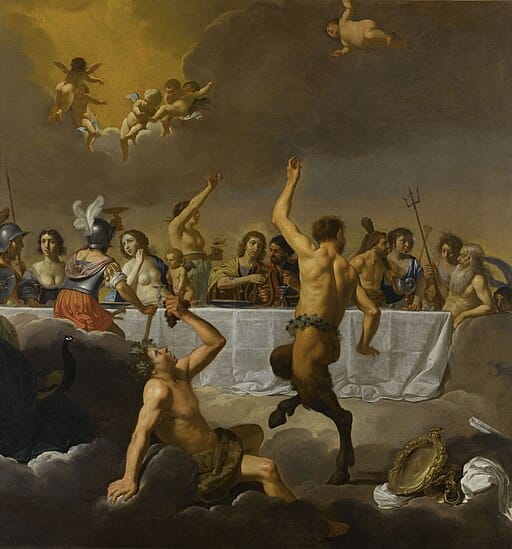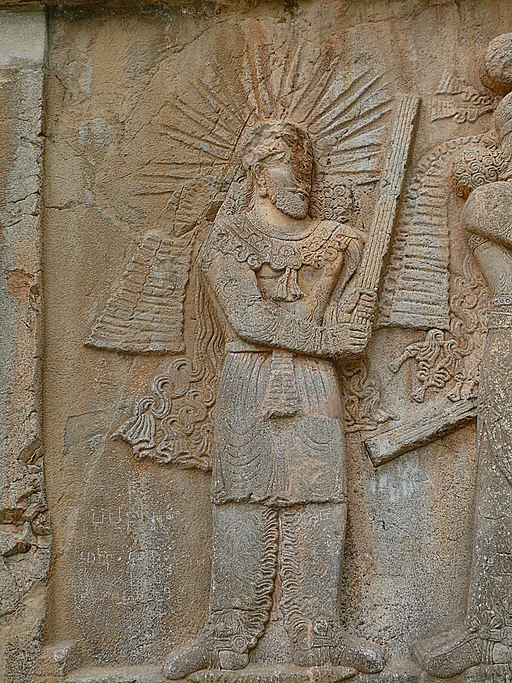Since 1789, the French have taken pride in laïcité. This is the separation of religion from public life and state institutions, emphasising the neutrality of the state in religious matters and the freedom of individuals to practise any religion or none at all. France upholds strong protections for freedom of expression, even when it involves blasphemy, criticism or satire of religion.
A huge challenge for France in recent times has been the assimilation of migrants from Muslim countries – where secularism is very weak – while at the same time upholding the principles of laïcité. There is some truth in the claim that, in the name of anti-racism and multiculturalism, some political actors in the left side of the political spectrum throughout Europe have been too complacent with migrants who are not willing to embrace secularism. France has courageously stood against that complacency, as in the staunch defense of Charlie Hebdo after the attacks by terrorists offended by blasphemous cartoons.
But in the context of the rise of the nationalist far-right in France, a bigger challenge now ensues. For it is no longer only Muslim citizens who are quick to be offended by seemingly blasphemous symbols. Christians – who, ever since revolutionary times in France, had learned to accept that blasphemy cannot be considered a crime – also want a slice of the religious pie, setting back the clock to the Ancien régime.
The inauguration of the 2024 Paris Olympics is a case in point. The ceremony featured choreography that, to many, seemed like a blasphemous parody of Leonardo da Vinci’s The Last Supper. The backlash from many conservatives was intense. Influential Catholic bishop Robert Barron lamented the affair:
I see this clear mockery of the Last Supper, and for Christians, the Last Supper, when Jesus, in anticipation of his death, gives his body and blood to the world… it’s… at the center of Christianity, and to see… drag queens and so on, cavorting in imitation of da Vinci’s Last Supper, how could Christians not construe that as a slap?
Except that it was not – at least not this time, anyway. As the organisers of the event have now clarified, the dance was not inspired by The Last Supper, but rather by scenes from Greek mythology. Thomas Jolly – the artistic director – explained that the ceremony was inspired by Jan van Bijlert’s painting The Feast of the Gods, with a focus on the Greek god Dionysus. The rushed reaction of conservative Christians has been taken as evidence of their ignorance of the history of art.
I beg to differ. In my view, the ceremony could be plausibly interpreted either way. But this is not fortuitous. There are indeed resemblances between the theme of the Last Supper and feasts of pagan gods. In both religious narratives, some divine being eats a meal in the company of others, and it is therefore inevitable that, in the artistic depictions of both traditions, some resemblances might come out. Indeed, this raises a long-discussed issue in the history of religions: to what extent is Christianity based on pagan traditions?

My view is that it is impossible to deny some pagan influence. Some authors have overblown the case and have argued that there was never a historical Jesus, but rather, the character portrayed in the New Testament is a fictional reinterpretation of pagan Mediterranean deities. This claim has been debunked many times by competent historians. But even granting that there was a historical Jesus and that some – but by no means all – stories narrated in the gospels did take place, it is only sensible to admit that the Christian interpretation of Jesus has been coloured by pagan influences.
Consider, for example, the halo. In many artistic depictions of Jesus – although not in da Vinci’s Last Supper – Jesus is presented with a halo. In the 2024 Olympics ceremony, the central figure – a large woman wearing a blue outfit – also sports a feature over her head that could be construed as a halo. Consequently, it is understandable that Christians might consider this a parody of Jesus. But, in Jan van Bijlert’s The Feast of the Gods, the god with a halo and occupying a central place is Apollo. In Roman and Greek cultures, halos were used to denote divine or exceptional figures. The halo represents the sun and, consequently, solar deities – Apollo being one of them – were typically adorned with halos.
Some authors who claim Jesus never existed suggest that the fictional character may have been modeled on solar deities. Again, this is a very questionable claim. In the New Testament, whatever associations are made between Jesus and the sun are tenuous at best and, in any case, Jesus is never described as having a halo.
Prior to the fifth century, halos were absent in Christian art. But by the early Middle Ages, depictions of Jesus began to incorporate the halo, and it is impossible to avoid the conclusion that this artistic feature carried pagan influences, although admittedly such interpretations of Jesus as a solar deity were not grounded in core Christian doctrine or tradition.

However, the theme of the Last Supper is at the core of Christianity, and here some pagan influence is notorious. As per traditional Christian interpretation, the occasion for the Last Supper was the Jewish Passover. Christians may object to the claim that their religion is grounded in pagan elements, but they acknowledge that Jesus was a Jew, and that Christianity derives from Judaism. In that regard, they are not at all bothered by the claim that the Last Supper has Jewish origins because, after all, the Last Supper was a Passover meal.
Yet, this is historically dubious. The gospels do not even agree on this point. The synoptic gospels – Matthew, Mark and Luke – claim that, indeed, the Last Supper was a Passover meal. But the gospel of John asserts that the Last Supper took place one day before Passover.
Historians do not usually lend much credibility to John’s version of events, but in this case, it seems that the Last Supper was not a Passover meal. The central elements of the Passover as per Jewish tradition are absent in the accounts of the synoptic gospels. There is no paschal lamb, no bitter herbs, no four cups of wine. Likewise, the book of Exodus suggest that Jews were not allowed to go out of their houses after the Passover but, as per the synoptics’ account, Jesus does so when he goes out to pray in the garden of Gethsemane.
If not a Passover celebration, what then was the Last Supper? If one accepts that Jesus anticipated that he would soon be arrested – a debatable premise – then it was probably a farewell meal. If, on the contrary, one believes that Jesus was completely surprised by his arrest (I personally lean more towards this hypothesis) then it was merely a regular meal. Either way, it seems very unlikely that during that meal, Jesus – a Jew first and foremost – would institute the ritual of the eucharist. Judaism has strong dietary regulations, and the idea of reenacting some form of cannibalism – even if only symbolically – would have been extremely alien to Jesus and his disciples.
Whence the eucharist, then? Many secular historians think the apostle Paul is the originator of this ritual and its theological implications. The ritual is mentioned for the first time in one of his letters – 1 Corinthians, which was written decades before the gospels. Paul was also a Jew but, unlike Jesus, he was Hellenistic. Consequently, Paul was much more familiar with Greek and Roman religious ideas that were widespread throughout the Mediterranean basin.
In that world, mystery religions were prevalent; one feature of such religions was the ritual consumption of an animal symbolising a deity in order to absorb its powers, particularly related to the idea of death and rebirth. It is not a long stretch of the imagination to assert that Paul incorporated these pagan ideas and practices into his interpretation of who Jesus was and, decades later, the gospels – all written by authors influenced by Paul’s ideas – developed the notion into a foundational narrative.
Not much is known about mystery religions, but it is plausible to think that their rituals involving meals were partly built on Greek mythological themes of banquets and feasts where gods dine on ambrosia, nectar and wine. Consequently, there may very well be some connection between pagan scenes of gods celebrating a big meal – such as the one depicted by Jan van Bijlert – and the Christian Last Supper – such as the one depicted by da Vinci. When a troupe of dancers ambiguously represents the former, it is not completely unexpected that many Christians would think that the dance is parodying the latter.
This affair should leave a couple of lessons. First, if European governments are concerned that some Muslim migrants may not be sufficiently willing to assimilate to the secular requirements of society, then Christians must lead with example and resist the urge to call for the criminalisation of blasphemy. Admittedly, in the aftermath of the Olympics ceremony, nobody called for beheadings or arrests, but the indignation was intense and Christians must make sure that this indignation never delves into requests for blasphemy laws.
Second, Christians should deepen their comprehension of their own religion’s history. This entails coming to terms with the fact that Christianity did borrow some elements from pagan cults and other religions. In so doing, Christians will be in a better position to understand that particular artistic expressions that may at first seem a blasphemous attack against their traditions are nothing of the sort.



